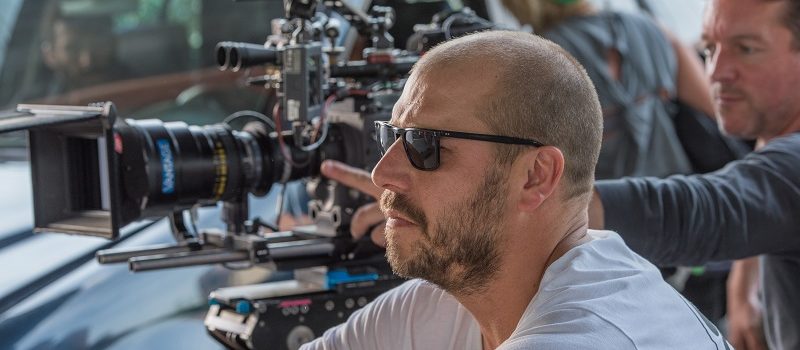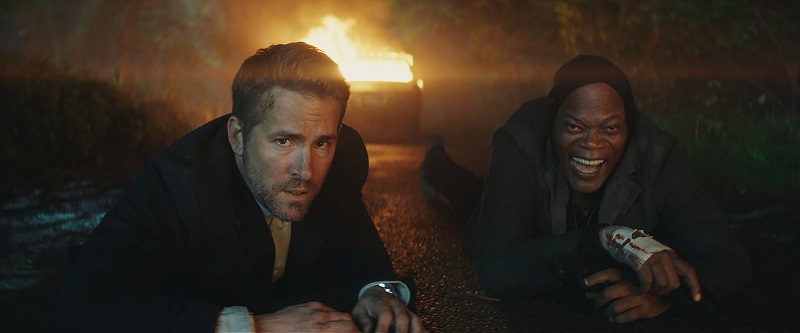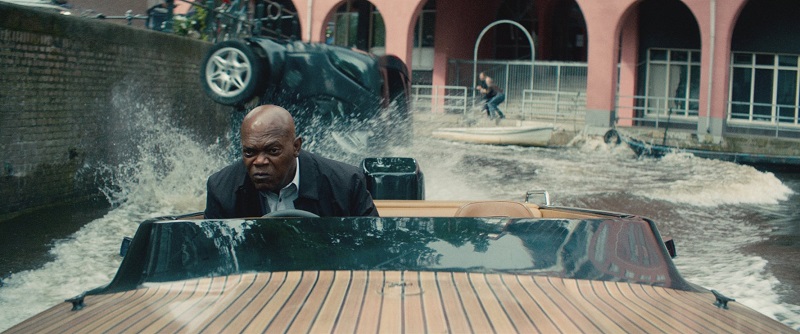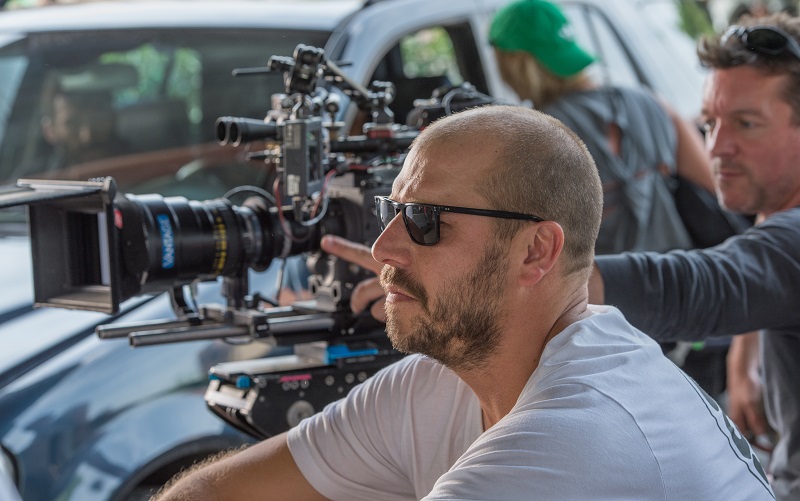The Hitman’s Bodyguard is the number one movie in the land and the man behind it, director Patrick Hughes, had to simultaneously juggle so many balls in the air, it is uncanny what he was able to do. The film stars Samuel L. Jackson and Ryan Reynolds and its timely plot follows the trial of an Eastern European leader who is being charged at The Hague for war crimes. The only witness who can put him behind bars forever is Jackson’s hitman. The only person who can get him there safely is Reynolds’ bodyguard.
The film is filled with action sequences that are extraordinary (such as one that finds Jackson piloting a motorboat down the canals of Amsterdam while Reynolds pursues on a motorcycle as both are being chased by people whose entire existence seems to be centered around stopping both their hearts cold. Hughes also had to have impeccable comic timing as the film is a comedy as well, putting Reynolds comic timing on full display. There is much that Hughes had to juggle and the Aussie helmer gave us a call for an exclusive chat to take us inside the making of the hit film, but also shares insight into finding that action-comedy sweet spot that is so hard to do and delves deep into the Reynolds’s trademark chaotic charm that is truly so special.
The Movie Mensch: There are some pretty incredible action scenes in this film. The one that stands out has to be the race through the canals of Amsterdam. How did shooting it compare to your expectations of shooting it?
Patrick Hughes: First off, we have to “own the streets.” That means you have to shut down every street that runs into the canals. There’s also a speed limit for boats on the canal. The reason there’s a speed limit is that people live on boats! There’s houseboats everywhere and the canals are quite shallow in some sections. The reason the speed limit is there, is because the speed limit stops the boat creating a wake. Once you create a wake – because the canals are so narrow – it splashes the water everywhere. Any other boat that’s on the side of the canal gets banged around. You end up just damaging all the other boats. For every canal we shot in, we had to clear out all the boats and then put our own boats in there. We had a whole selection of boats that we knew was okay if we just trashed them, because they had Sam speeding down these canals at 100 miles an hour. Then there is the added difficulty of shooting on water — which takes quite a lot of time. There’s big safety issues involved. When we own the streets, we’d own all the parked cars. We’ve put our cars in and our boats in and there’s another thing. The other challenge was that the aerial — geographically, you had to always know where you are. I felt like the danger of a sequence like that is you can quickly get lost and lose your audience. They don’t geographically know where we started the canal, who’s going where? So, that was the real challenge.
The Movie Mensch: Those aerial shots were intense and it sounds utterly crucial. How on earth did you pull it off?
Patrick Hughes: With the aerial unit, the minimum height was 350 feet; which is not very dynamic for helicopter shots. It was illegal to fly drones. So, what we ended up doing is we brought in a cable team to do the cable camera. They were rigging the canals the day before we got there, so every time we got onto a canal, we had a camera that would fly across it. It’s like the same style of camera they use in the NFL. That was a hugely dynamic process.
The Movie Mensch: I’ve been waiting for years for someone to do an action sequence to Black Betty. It just screams action sequence, man, it does. Why did you choose that one and make my dream come true?
Patrick Hughes: [Laughs] I have a playlist when I’m in pre-production. As soon as I’m working on the script, I’ve got tracks in mind, and Black Betty was one that came up. That’s actually a Melbourne band (Spiderbait). I’m originally from Melbourne, Australia. I’ve always felt that that cover is the best cover of that Leadbelly song. It just felt perfect for that sequence, the car chase sequence.
The Movie Mensch: So good. You made my day. When that song started, I was like, “Yes!”
Patrick Hughes: I love when that track ends and you end with that big explosion when Sam finally takes the guys out with the truck hitting the bad guys’ car. Then the track ends and you lull the audience into a false expectation. And then you realize, oh no, Ryan’s still on the run. Then you go into your Chuck Berry sequence.
The Movie Mensch: There’s something I find incredibly unique about Ryan. He’s so charismatic and he’s delivering lines as a funny man but can do it with a straight face. Something that I’ve always thought he is great at is he’s got this chaotic charm. You’ve have that one sequence where it seems like the world is ending behind him and he’s just so cool-as-can-be. What was so magical working with him for you?
Patrick Hughes: It would be his vulnerability. He’s an actor that embraces vulnerability. I think that’s what makes him so charming. The audiences identify with him because, I guess, potentially we all feel vulnerable. I felt like that was a perfect pairing in terms of their chemistry. You’ve got Sam who’s the big head honcho running around, jumping in head-first. He operates from a place of his heart, goes with his gut instinct. Then Ryan is very analytical. A really good example was we were working on the big fight sequence, the one that goes out into the hardware store. We wanted it to be — and this is why I put Chuck Berry on that sequence — like a dance. You watch Ryan. He is absolutely just trying to run away from these guys. He’s just throwing everything he can at them. That sort of made it very playful. I think that’s one of Ryan’s most charming qualities. There’s something really warming and genuine about that. I’ve got a soft spot for Ryan. I genuinely love him. He’s a really beautiful human being.
The Movie Mensch: Whether male-female or male-male, it doesn’t matter — chemistry is so elusive. There’s no guarantee. Everybody seems to get along with Ryan and also everyone seems to get along with Sam. But yet, you put them together and there’s no guarantee it will work. When did you know while making The Hitman’s Bodyguard that these two were like a couple of firecrackers together?
Patrick Hughes: That was really the scary. I felt like, wow, there is gonna be some dynamite there. But… it’s exactly as you said — until you’ve physically got them in a room together and they’re trading barbs in front of a camera, you just don’t know if there will be sparks. It wasn’t until the second or third day of filming that they finally were on screen together for the first time. I remember when we did the shot. As soon as I called “cut,” I turned to the DP and I said, “We got a movie.” I just knew we had it there, because you could see that their chemistry was dynamite. It was electrifying.




